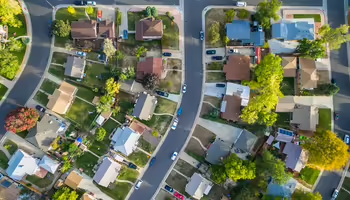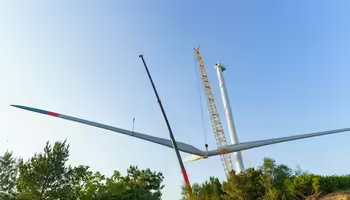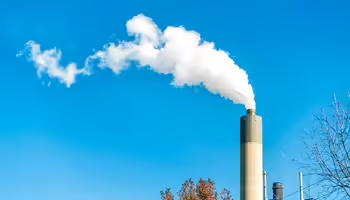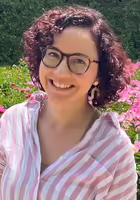When a community plans for renewable energy development, whether inside a city or in a rural part of a county, energy planning allows that community to be better prepared to guide how energy sources are developed and how it will affect them.
Planning for Renewable Energy Projects
Cities can be creative with how they plan for renewable energy projects. They can have big ideas about local energy production and energy conservation to benefit their residents. Cities can envision community gardens that use agrivoltaics to power nearby businesses or community centers, or construction standards that rigorously reduce carbon emissions.
Counties are usually more concerned with utility-scale projects, but these large, commercial projects can inject tax revenue into communities, allowing school districts to implement upgrades or for infrastructure across the county to be improved. In rural economies, land leases from solar and wind projects can be another source of revenue for landowners. With the potential to pair solar with continued crop production or for perennial crops to support new biofuels markets, renewable energy can be transformative while providing energy independence.
Illinois Extension understands that a transition to renewable energy can bring uncertainty in areas that have relied heavily on coal or natural gas in their economies, and it can lead to anxieties about a changing landscape. With careful energy planning, though, it’s possible to ameliorate some of these concerns and implement benefits for communities, including rethinking local economies.
We encourage you to read about the work that Extension is doing to assist coal communities [INSERT LINK TO SUBPAGE], as well as what community benefit plans or agreements [INSERT LINK TO SUBPAGE] may be possible between utility-scale energy developers and local communities.
The contents of our energy planning pages are meant to be used by local officials, including Planning Commission members and Zoning Board of Appeals members, as well as by citizens who may be curious as to how renewable energy projects are permitted or how state law influences local decisions.
Tools for Energy Planning
There are multiple tools that communities can use to plan for renewable energy projects and how to gain benefits from them. The two tools we focus on most revolve around where energy projects can be sited, zoning ordinances, and the resources that are available for improving energy efficiency and conservation, building codes. Read more about the types of tools below.
Illinois Extension staff are available to assist your community or provide additional resources on economic and workforce development.
Find more information about ordinances related to land use and energy planning on these pages.
Comprehensive Plans
A comprehensive plan is a guiding document that a community creates in order to express their vision for the community and create priorities for their governing leaders and local officials. It is an umbrella for all of the other tools that are relevant to planning for renewable energy.
Comprehensive plans create priorities, for example, around land use decisions, what types of businesses to attract, and how to create welcoming communities. These plans typically take a year or more to produce, wherein an outside consultant may be hired to help identify priorities after engaging with stakeholders, including the general public.
Comprehensive plans are long-range plans, meaning they create a blueprint for the community for the next 10 to 20 years. Well-written comprehensive plans include goals and objectives that are measurable over time.
Zoning Ordinances
Zoning ordinances focus on how a community governs “land use.” The term “land use” encompasses what is allowed to be built–and where–inside of a community’s jurisdiction.
Zoning ordinances are laws adopted by counties and municipalities, meaning that the ordinances can be enforced if they are not followed. They can provide both regulation and incentives for development to help a community achieve its goals. Incentives could include tax abatements to attract new development or a relaxation of some site planning requirements if a development provides a public benefit.
Building Codes
Building codes, or building ordinances, focus on how structures are built to ensure they are safe for habitation or use and will be structurally sound. These codes usually apply to new construction, renovations, and repairs. Structural components covered by building codes can include roofs, foundations, windows and doors, electrical, and plumbing. Energy conservation codes are a kind of building code and focus on reducing the amount of cool air that is lost in the summer and warm air in the winter, thereby reducing the usage of HVAC systems.
Economic Development
Economic development encompasses goals and strategies to retain existing businesses in a community, as well as how to attract new types of businesses. Local chambers of commerce may be involved in economic development planning. Economic development is an ongoing process in order to be prepared for changes in industry as technological advancements are made or local and national policies change. This type of planning can work in tandem with workforce development.
Workforce Development
Workforce development refers to the supports in place for individuals as they seek jobs or retraining opportunities, as well as the programs that both the public and private sectors may have in place to attract new employees. States and non-profit organizations may have training programs for emerging or vital industries to help maintain or build the needed workforce. Workforce development is largely focused on education and training to support broader societal goals.
Energy Planning Topics

Energy Siting
Learn more about how zoning and land use planning impact renewable energy adoption

Building Codes
Learn more about energy-efficient building codes.

Decommissioning and Repowering
Discover what’s involved when taking solar and wind projects out of commission or when replacing components to extend their lifespan

Community Benefits
Read about the potential for developers to provide support to local organizations

Coal Transition
Discover the work that is being done to support Illinois’ coal communities as they transition away from coal productionm
Connect with Extension Staff

Andrea Wagner
